|
Shooting in the dark is easy. Just put the camera on the tripod, set ISO 12000 and a 30 second shutter speed at f/16, and you’re all set, right? I’ve tried that, and discovered a few things to make usable night pictures instead. 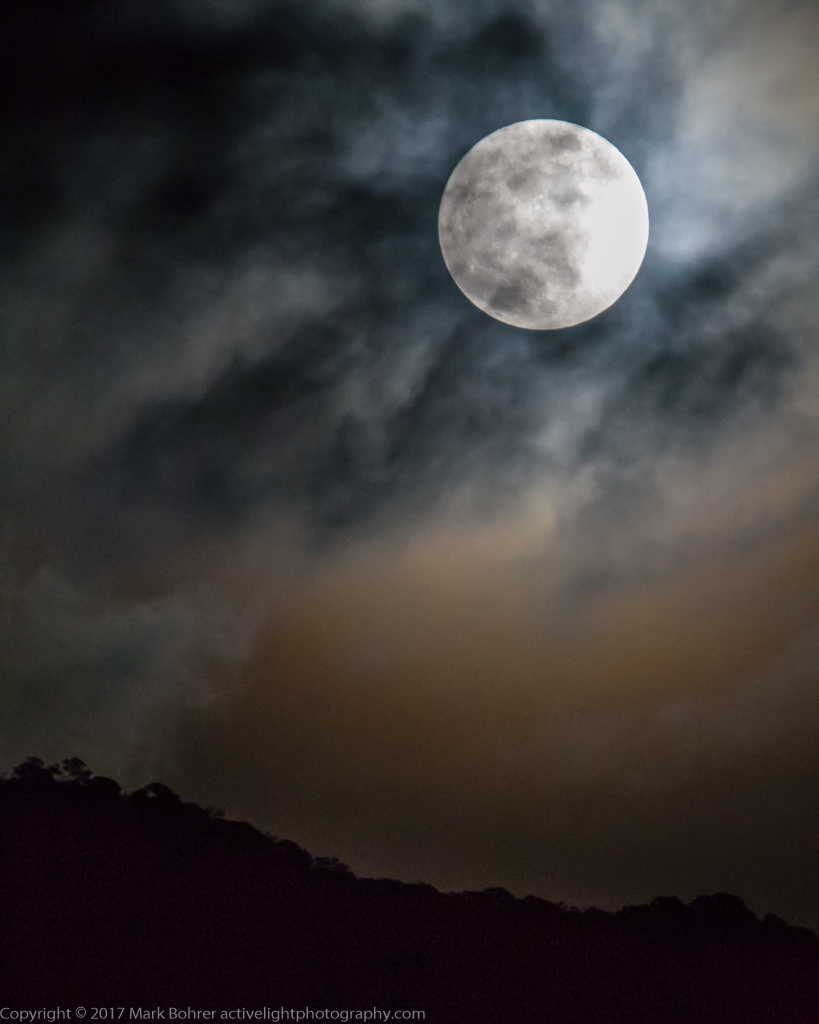 Moon behind the clouds, Albuquerque, New Mexico Shot In The Dark In a previous post, I talked about some straight-forward ways to shoot night pictures. With approaching winter, you once again have dark skies early in the evening. But some new cameras pose limitations on usable shutter speeds, even as they improve noise performance. Work With The Camera Many mirrorless cameras limit you to an 8 second maximum shutter speed when you’re shooting in manual. I shoot manual for night shots – the camera always wants more time to make it look like daylight in auto exposure, and if car lights drive by, the camera changes it and everything’s out the window. If the ‘extra’ lighting is away from center-frame and it’s small enough, it won’t affect exposure, but you don’t always get this lucky. Manual control is reliable. So what do you do if you want more than a camera’s timed 8 seconds (or just 4 if you’re using a Fuji X-camera)? The simple answer with a mirrorless camera is to use B. Fuji’s X-series mirrorless cameras will show you how long you’ve held the shutter open while you’re taking the picture. This works with Fuji X-series cameras, but the most a Leica M10 will allow in B is 8 seconds. Seems like an arbitrary limit from since-1923, completely-manual 35mm camera makers. But there are some good reasons to limit that exposure time. 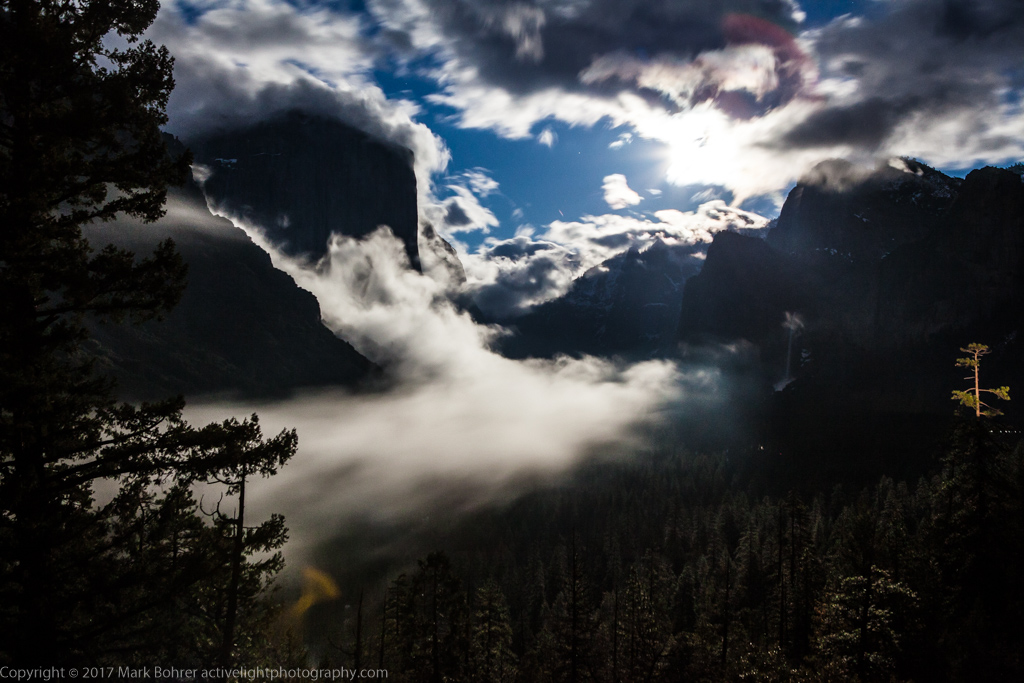 Yosemite by moonlight – note extra car lighting at right Longtime Problems First, s#!& happens over 8 seconds. Even with a cable release (you are using one, right?), you’ll get vibration as people walk by, inducing sometimes-noticeable camera shake. And the longer that exposure goes, the more likely someone will trip over the tripod (maybe even the photographer – I’ve done it). And there’s noise. All electronic circuits have it – it’s their nature. Long shutter speeds give circuits more time to add more noise. For you math types, you’re integrating the noise over that long exposure time. Even with a camera’s automatic dark-frame noise canceling at the end, you’ll still see more. The only way around it is to decrease the shutter speed. But you also want to decrease ISO to reduce it – and that means a faster speed. So what can you do about it? Low-Noise Night Exposures The easy but expensive answer is a more recent camera. An example of the improvement – in the four years between the Leica M Typ 240 and M10, max usable ISO went from 3200 to 12500. Sure, you won’t shoot there all the time, but it’s a good indicator of noise-reduction progress. Even Fuji’s four year old X-E2 has low-enough noise at ISO 6400 to allow good long-exposure performance. And their one year old X-T2 works usably well to ISO 12800. Some manufacturers do better than others with this. 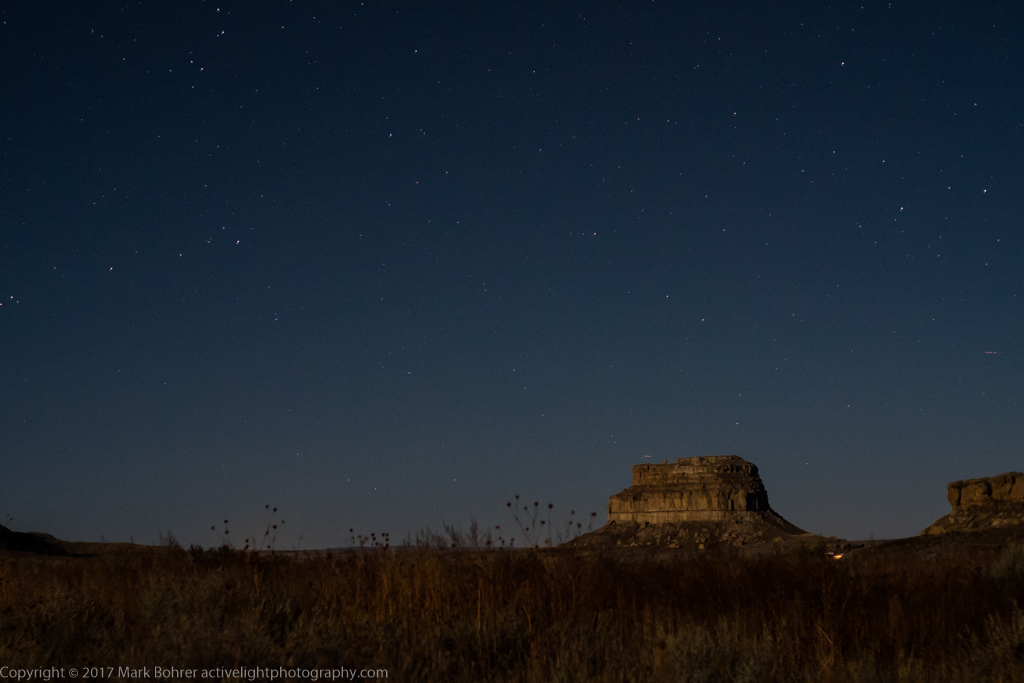 Fajada Butte, Chaco Canyon 0.5 EV longer exposure with Fuji X-E2, reduced again in Lightroom You can also take a cue from old audio noise reduction (NR) tech. The original Dolby NR boosted incoming low-level inputs on recording, and reduced low levels by the same amount on playback. This shrank the noise of the electronics in quiet passages when it was most noticeable, while allowing low-level audio to be heard. If the exposure’s going to be long, I start by shooting raw for maximum contrast range. I’ll set ISO to give a less than 8 second shutter speed for my chosen aperture (if possible). Then I overexpose by 0.5 EV or a little more. Later in Lightroom, I add contrast to taste, and reduce exposure by the same 0.5 EV or more. The noise stays low enough to avoid excessive smoothing AKA feature smudge from Lightroom’s noise reduction controls. Always remember – exposure times longer than about 5-10 seconds will show star trails instead of sharp points. Unfortunately, you can’t tell the Earth to stand still. You also can’t command the wind to stop – you’ll sometimes get waving weeds, even when everything else is rock-steady. Also remember – the moon is a daylight exposure, since it reflects the full sun. You’ll need to expose for near-daylight, unless clouds in front of it bring moon brightness down. And you’ll need to keep your camera from making it look like daylight. I take the camera’s meter reading and subtract at least two stops / EV steps from it. This will usually be a shutter speed increase – faster times are what I want to reduce noise and chance of camera shake. Because I’ve seen where max usable ISO ends for my cameras, I know just how high I can go before the noise looks like baseballs. With access to a tripod (or not) and keeping the shutter speed shorter than 5-10 seconds (or hand-holdable), I can choose a sensible exposure and ISO for my picture. 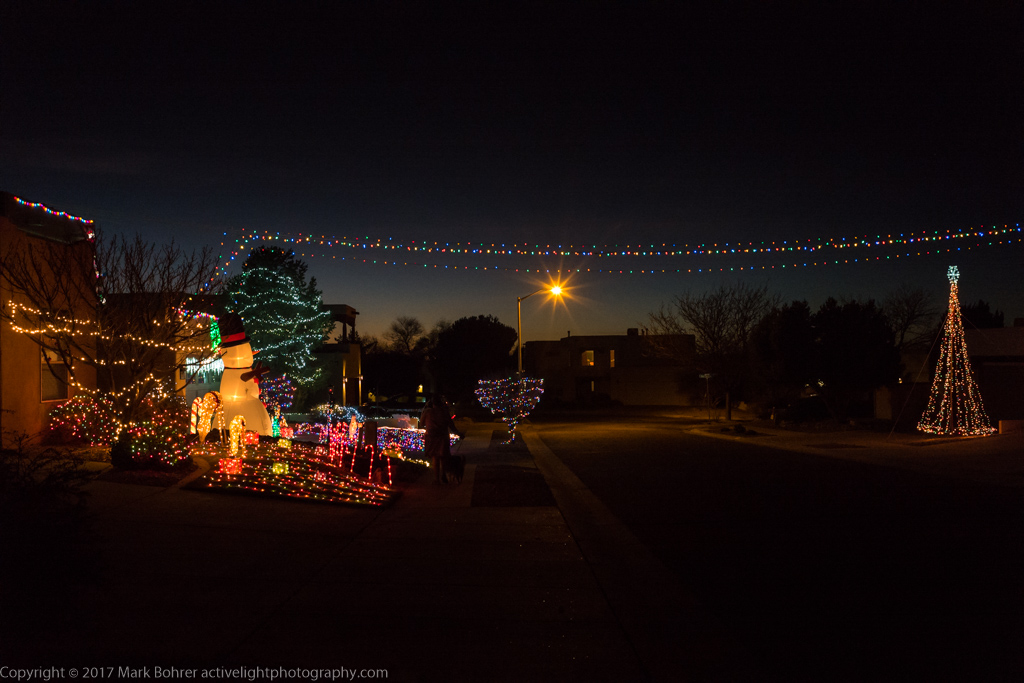 Christmas lights, Albuquerque, New Mexico I’m not always shooting the sky after hours. Sometimes the action is on the ground. I use the same long exposure methods for post-sunsets, candlelight and Christmas lights. Shot Notes You could use a dSLR. This gives you a brighter, optical view looking through the lens. In addition, Canon’s recent EOS cameras give timed shutter speeds out to 30 seconds, so you won’t have to count, “One one thousand, two one thousand…” They’re also heavy to carry to your picture site. And you may have to lock a dSLR’s viewing mirror up before shooting to avoid blurring vibration from the mirror’s ‘bang-bang’ when it flips up out of the way and back down. This usually affects the picture for shutter speeds below 1/15 second to around a couple seconds, depending on how long it takes the camera/tripod system to damp out the vibration. Test this beforehand, or take your chances on blurring the shot. Newer dSLRs are better at keeping mirror vibration effects away. Those recent Canon EOS dSLRs also let you go longer than 30 seconds with B. But they’ll only tell you how long it was when you’re done taking the picture – so you’ll need your own timer, or a really good count of seconds. 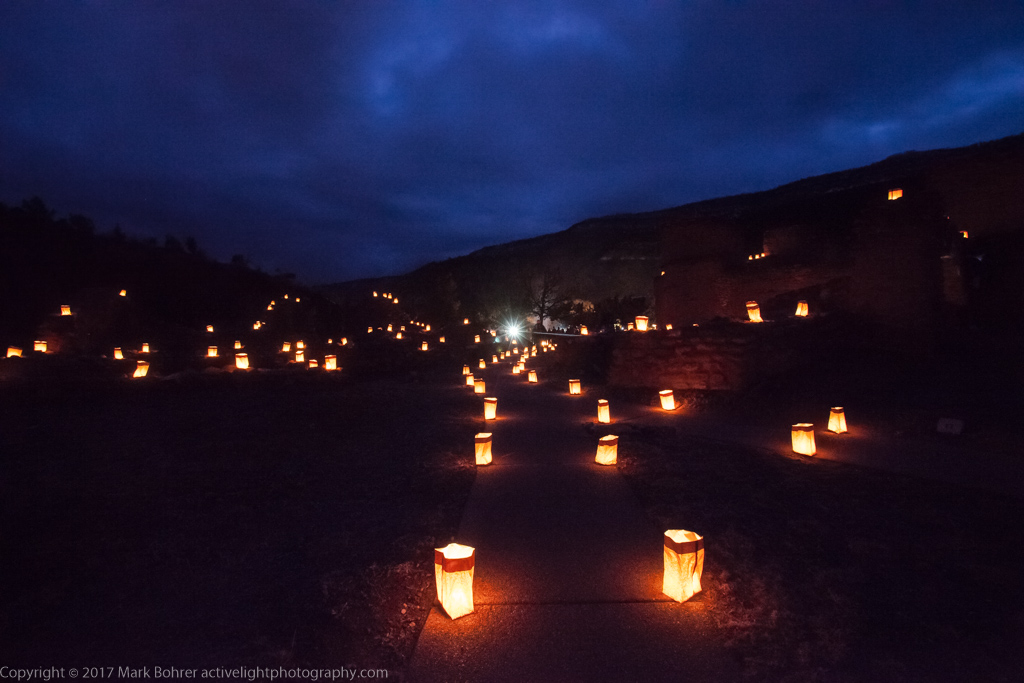 Lights among the Ruins, Jemez Historic Site, New Mexico I went the timed long exposure route with an EOS 5D mk II and 7D for Lights among the Ruins at New Mexico’s Jemez State Historic Site. I got 15 second exposures that showed sky textures and candlelight in bags, AKA faralitos. Flash would not only spoil the scene, it wouldn’t help either. Bright subjects like Christmas lights give you much shorter shutter times. I can usually handhold rangefinder and mirroless cameras at high ISOs for wide shots. But for best sharpness I still go with a tripod. 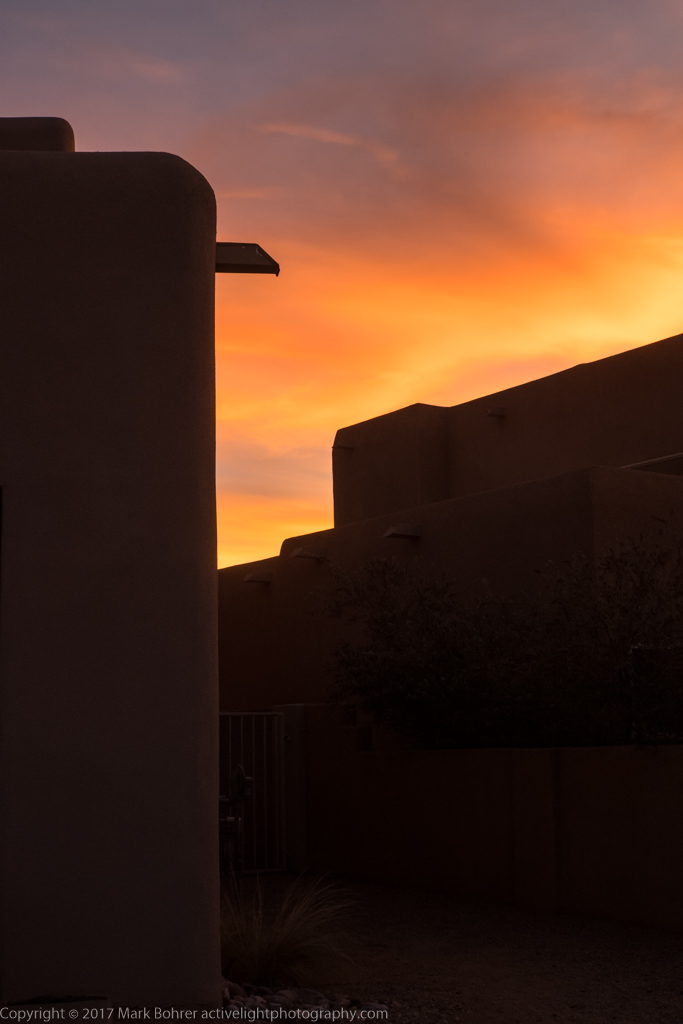 After-sunset light, Albuquerque, New Mexico Leica M10, 35mm f/2 RF-Summicron-M |
(408) 483-3782
Curious about how to shoot ruins?(408) 483-3782

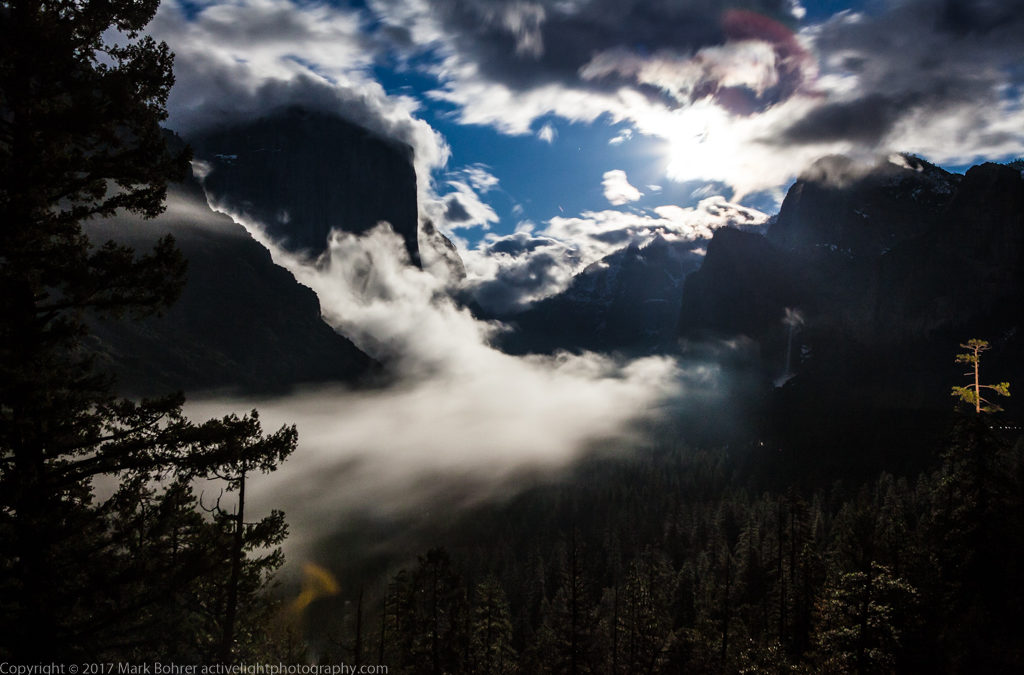
Recent Comments